While creating new characters, there will perpetually be “borrowed ideas” swimming about. Of course, we are talking about the fact that many heroes and villains have been cloned and remade into better, and sometimes worse, versions.
Characters like Ant-Man and The Atom, as well as Darkseid and Thanos, and even the Winter Soldier and the Red Hood, are far too similar to be coincidences. There have been several instances in the history of superhero comics where heroes were inspired by prior characters or programs after their brand-new character or program was a huge hit.
Some superheroes are obvious rip-offs of others, while others are less so; both types of rip-offs eventually develop their own, distinct image. In fact, with a little help from a few talented creators, some of the knock-off characters turned out to be even better than the original.
With the right adjustments, a rip-off can become a developed, rich, engaging, and generally better-written protagonist than the original. However, there are times when the original character outweighs the rip-off in every manner, such as when the character’s depth, strength, or having more spectacular stories under their belt outweighs the rip-off in every regard.
Sideways
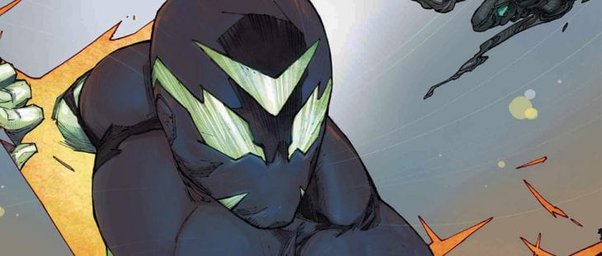
Sideways stars newcomer Derek James as the main character, a fresh recipient of powers as a result of the incidents of Dark Nights: Metal. He has the capacity to “rift” across space, allowing for long-distance teleportation. He’s a lonely high-school student attempting to be a superhero, and thanks to the character’s graphic style, friendly personality, quips, as well as “teenager with a secret identity” status – Sideways has frequently received the question “Is this just DC’s response to Spider-Man?”
When Challengers Mountain came back from the Dark Multiverse, Derek was already in Gotham City living with his adoptive mother, Helen. Derek plunged through a big crack in the Earth and through a rip inside the Dark Multiverse after being torn from his mom by the accompanying earthquake. Derek was then able to transport himself back to Gotham after four days. After about a month, his buddy Ernestine created an outfit for him to wear. However, on his very first live-stream as the superhero Sideways, Derek was accosted by someone named Tempus Fuginaut, a mysterious entity who threatened to murder him for allegedly causing space-time to become damaged.
Derek attempted to flee using his superpowers, but Tempus revealed that his staff made Derek’s powers ineffective, thus he chose to flee by freefall. Derek, together with Aqualad, Arrowette and Spoiler, was recruited as a supporting member for Young Justice by Impulse to combat a renegade S.T.A.R. Labs division. He was also instrumental in successfully rescuing Conner Kent and getting him back to the Earth after he became stranded in Skartaris.
Black Spider
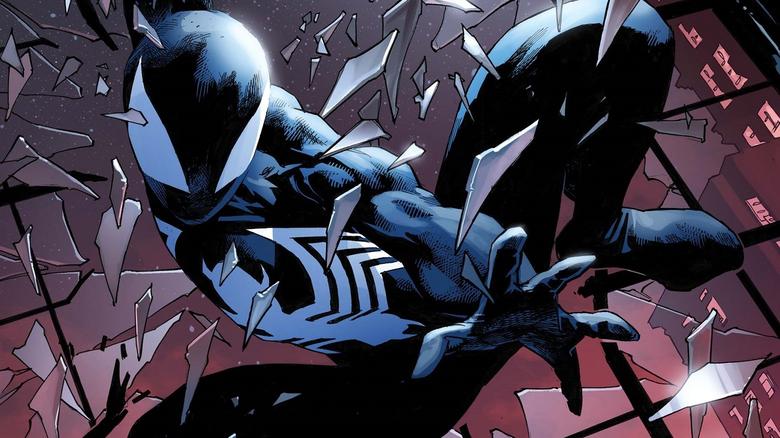
Black Spider is a part of the League of Shadows and an assassin. Some people believe Black Spider is a copycat of Spiderman since he appeared in the TV cartoon series Young Justice as a ruthless assassin who utilized webbing and stuck to surfaces. However, he is radically different in all of his comic adaptations, three additional animations, as well as the Arkham video game. He is a vigilante who primarily targets drug pushers; he has virtually no powers and he also does not ever use any webbing. Instead, his resemblance is similar to that of a ninja. His trademark weapon is a wrist-mounted pistol, however, in the rebirth version, he has two claws linked to his back and he also carries a machine gun.
While performing his duties, Black Spider emanates an obvious sadistic delight. Before killing his victims, he likes taunting them with grim comedy, quipping, and bantering. Black Spider is dressed in a purple spandex suit. His mask contains purple hues, with the rear being dark purple in color and the front being a standard shade of purple. It also has a spider insignia that covers much of his brow and connects to his golden eye segments.
The torso of the suit, as well as his knees, hands, elbow, inner elbow, and sections of his feet, are dark purple, whereas the rest of the outfit is purple. He also wears two dull gray bands around his wrist. Black Spider is a great hand-to-hand fighter and incredibly nimble. On his wrist is a gadget that can discharge a sticky material that resembles a spider’s web.
Danny Phantom

Danny Phantom of Nickelodeon adapted traditional Spider-Man clichés to the early 2000s in a few ways. Spider-Man had a significant effect on the superhero category as a whole, inspiring the creation of subsequent characters in a similar spirit. This goes beyond comic books and has affected characters in other types of media, such as Danny Phantom in Nickelodeon. Danny Phantom shares some parallels with legendary Spider-Man stories, which contributed to the Nickelodeon cartoon’s Silver Age superhero image.
Peter Parker and also Danny Fenton, like many other superheroes, have covert identities as Spider-Man as well as Danny Phantom. Because the rest of the world sees them as ordinary teens, they attempt to keep their ordinary lives separate from their superheroic ones. But what both Danny and Peter didn’t know was that someone essential in their lives knew the truth and kept it from the heroes.
When Spider-Man was seen going into or out of the Parker household, his future romantic interest Mary-Jane Watson discovered the truth. Jazz, Danny’s elder sister, also discovers the truth. Both redheads finally disclosed their findings to their respective world’s heroes.
Danny Phantom, as well as Spider-Man, were pursued by the same individuals they were attempting to protect. External sources, who find methods to shift public opinion against the hero, play a role in both scenarios. Much of Spider-Man’s success can be attributed to J. Jonah Jameson’s prominence in the press. Jonah, the Editor-in-Chief of the newspaper, the Daily Bugle, ends up having a significant effect on how Spider-Man is viewed.
Danny dodged comparable scrutiny initially in his career but was also seen fondly by some. However, at the conclusion of the first season of “Public Enemies,” the ghostly prison warden Walker employed his skills to influence the inhabitants of Amity Park into being afraid of him. Spider-Man and Danny Phantom both also have a shifting rogues gallery of adversaries.
While all of Spider-early Man’s opponents were animal-like, almost all of Danny’s were various types of ghosts. The phantom hunter Skulker had similar objectives to Kraven the Hunter, while Danny’s archenemy Vlad Masters was extremely similar in personality and character to Norman Osborn, or the Green Goblin.
The Tarantula
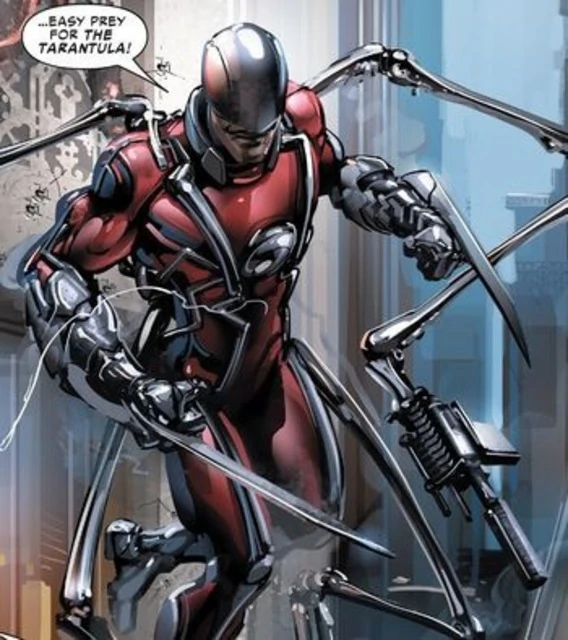
Although Spider-Man is the most well-known spider-based superhero, DC beat Marvel to the punch with The Tarantula two decades earlier. If you ask a regular comic book reader who the very first spider-like superhero was, they’ll probably say Marvel’s Spider-Man. A true comic book aficionado will know that the right answer is actually DC’s The Tarantula.
While Spidey made his web-slinging debut in 1962’s comic Amazing Fantasy #15, DC’s wall-climbing superhero initially debuted in 1941 in the Golden Age Star-Spangled Comic issue number 1 from the imaginative duo of Mort Weisinger as well as Harold Wilson Sharp. While the iconic Tarantula, whose real name was John Law, a crime novelist looking to put his expertise in the underworld to great use, didn’t have the same superpowers as his better-known Marvel contemporary, he was the very first hero to wander on walls and fling webs at people although Tarantula’s webs happened to come out of customized pistols.
The writer was inspired by his pet tarantula, and the very first comic in which he appeared depicts him diving into combat in a manner very reminiscent to that of Spiderman. Tarantula could cling to walls, but it had absolutely nothing to do with a deadly creepy crawler. He just attached suction cups to his outfit. Seriously, tarantula’s first narrative concludes with him capturing “America’s Arch-Criminal ” Ace-Deuce.
As if the parallels weren’t obvious enough, yet another image in Tarantula’s first tale shows him returning home after foiling a heist to be greeted by his maid, Olga. The radio broadcasted the news. ‘Spider-Man,’ exclaimed the speaker, and ‘Tarantula,’ the moniker you chose!” Law would soon retire from superhero work and return to full-time writing, finally settling in Blüdhaven and sharing an apartment complex with Dick Grayson’s Nightwing.
But it was far from the ending of the Tarantula character. Catalina Flores, formerly a federal agent who also lives in Blüdhaven, went on to take up the Tarantula persona in 2002, first debuting in Nightwing Vol 2 #71. Catalina Flores appears to have passed away in a 2009 issue of the Secret Six, and DC’s Tarantula position has been empty since then.
Spider-Plant Man
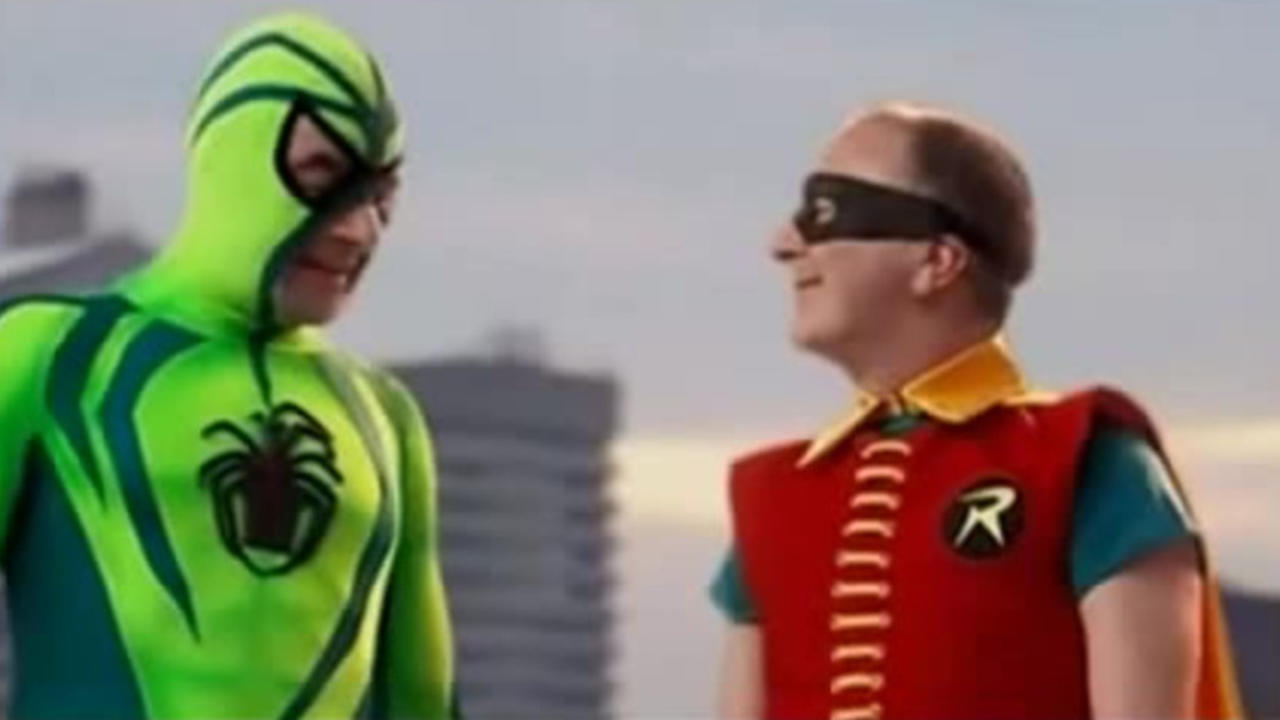
Spider-Plant Man is actually a British satirical short film that spoofs the Spider-Man 2002 film adaptation. It was created for the Comic Relief 2005 appeal and shown on BBC One on March 11, 2005. Rowan Atkinson played the role of Peter Piper or the Spider-Plant Man, while Rachel Stevens played his love interest Jane-Mary. Jim Broadbent, who played Batman, and Tony Robinson, who played Robin, both appeared in the segment. Peter Piper, also referred to as Spider-Plant Man, is the primary and main protagonist of the Spider-Plant Man spoof film.
Spider-Plant Man came to life while Rowan Atkinson as well as other writers were brainstorming concepts for a potential fifth season of Blackadder. One of these concepts was Batadder, a Batman spoof in which Atkinson would play the titular character and Robinson would go on to play his Robin-like sidekick. Arrangements for the Blackadder series number five finally fell through, eventually leading to the Comic Relief episode. The segment “Spider Plant Man” was directed by Ed Bye of Red Dwarf fame and featured CGI from The Farm as well as Steve Deakin-Davies’ Ambition firm.
This small segment, of course, parodies “Spider-Man” as well as “Spider-Man 2” with tons of brilliant British comedy and several well-known British comedians. Most people can’t look at Rowan Atkinson without thinking of Mr. Bean or Blackadder, but in this piece, he was fantastic and convinced us that he was Peter Piper. Many more well-known British comedians, including Mackenzie Crook as well as Simon Pegg, play minor roles in the film and are all quite amusing in their performances, no matter how little.
This short segment has some great laugh-out-loud sequences and is a lot of fun to see. Of course, you must be able to enjoy British humor in order to find this humorous and delightful, but who doesn’t? It’s ridiculous, over-the-top, and totally ludicrous.
The Dragonfly
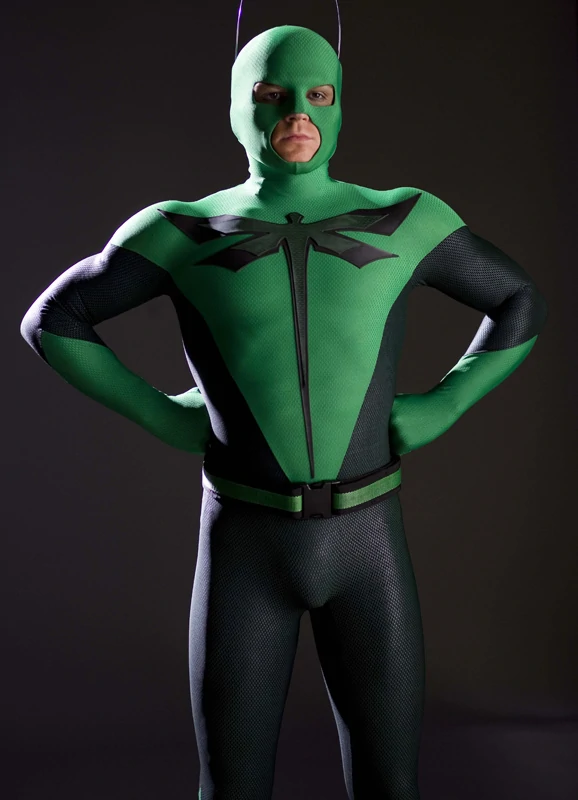
Richard “Rick” Riker, who is also commonly known as Dragonfly, is the primary character in the 2008 superhero comic parody film “Superhero Movie.” Drake Bell, who has also played the roles of Drake Parker as well as Timmy Turner, and Spider-Man, plays him. Rick Riker was originally born to wealthy parents Julia and Blaine Riker. In an unusual twist of fate, Rick tried to stop a robber, only to have him murder his father and mother in the process. Before dying, Blaine advised Rick to invest in a failing online startup that would inevitably collapse, rather than Google. Rick was well looked after by his uncle Albert as well as aunt Lucille.
Rick, an undesirable misfit who attended Empire High School, was the lone buddy of Trey, a moderately tech-savvy youngster. Rick and his peers pay a visit to an animal research center managed by a chronically ill Lou Landers, who once knew Rick’s parents. Lou’s nephew Lance then throws Rick into a mound of dung, prompting him to clean his clothes with an animal-specific sexual pheromone.
As a result, Rick gets attacked by various animals and is bitten by an escaped genetically modified super dragonfly. Rick feels unwell after arriving home and ends up napping all night. Rick visits the science fair the next morning, only to discover himself in a confrontation with Lance and displaying superhuman abilities.
Rick began demonstrating remarkable superhuman powers after he was bitten by a genetically engineered dragonfly, which he deployed against his foes as the Dragonfly. Despite its diminutive size, the dragonfly which bit Rick was reputed to have incredible power. Prior to Rick’s bite, it was also shown that certain dragonflies had naturally armored skin. This, of course, armored Rick’s skin, despite its feeble appearance.
It can survive blades, tiny bombs, and even life-threatening weaponry. His armored skin has bestowed him with the capacity to harden his skin to the point that he can endure less agony from things that would kill a normal person. Dragonfly is a satire centered on Spider-Man. His origin story, however, is identical to that of Batman. Drake Bell, ironically, would go on to play Spider-Man in voice-over media, first with The Avengers: Earth’s Mightiest Heroes and subsequently Ultimate Spider-Man.
Mark Grayson (Invincible)
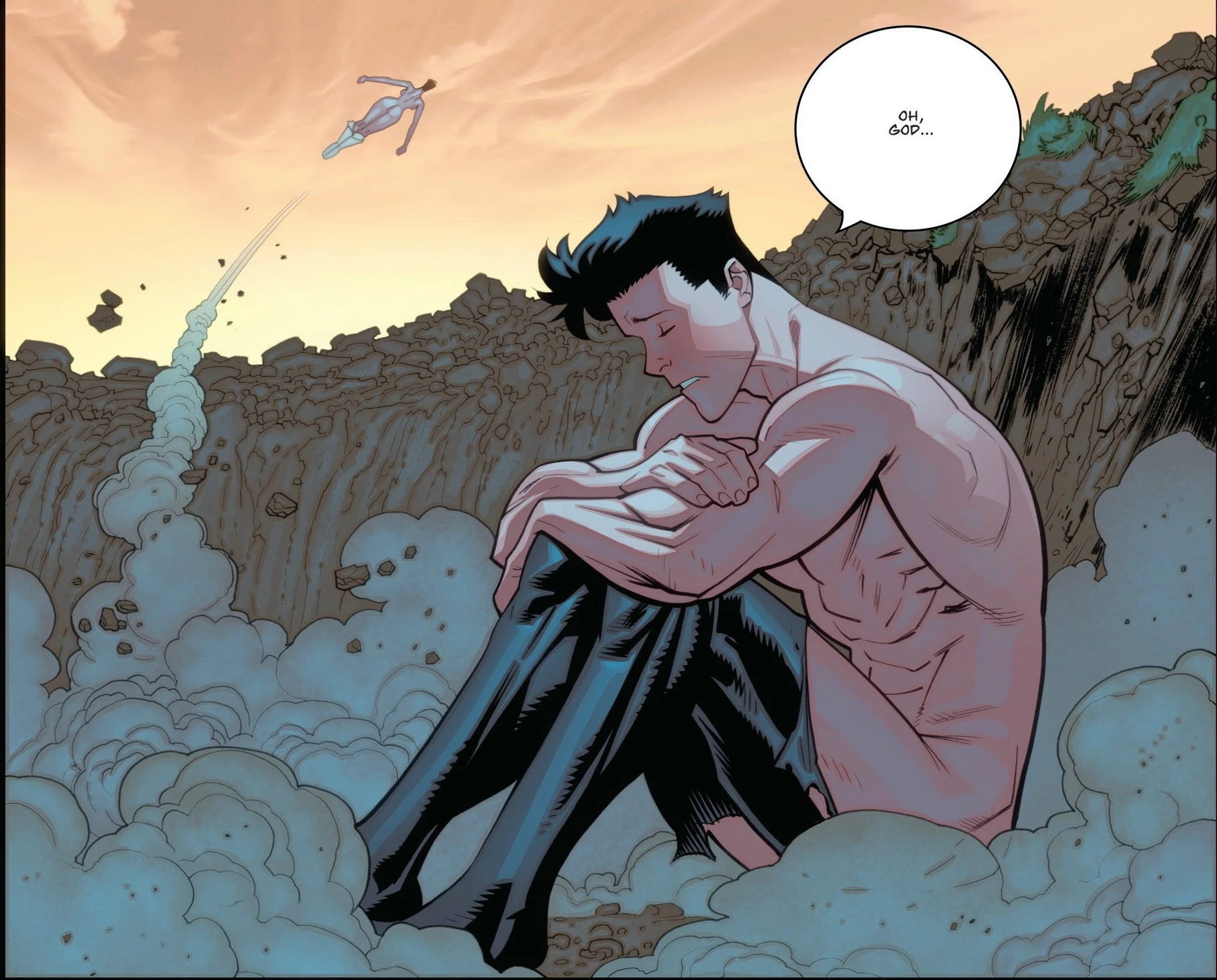
Invincible, commonly known as Mark Grayson, is an Image Universe hero developed by creator Robert Kirkman as well as artist Cory Walker and is presently illustrated by Ryan Ottley. Nolan Grayson, who is a Viltrumite man, and Deborah Grayson, a normal human woman, gave birth to Mark Grayson. When Mark was about seven years old, his father informed him that he was an extraterrestrial from another planet and the superhero Omni-Man. According to Mark, the Viltrumites are a peaceful race of Supermen.
Mark discovered that his dad had come to Earth to defend it and that he, too, might one day have superpowers like Nolan. Every day, he hoped for his abilities to manifest. One day during his final year in high school, while working at his part-time job, he launched a garbage bag into the sky. Nolan ultimately had his buddy Art create Mark a superhero suit, but first Mark had to decide on a name. He was brought to the headmaster’s office after defending a classmate from bullying. The principal praised him but reminded him that he was not “invincible” or anything really.
Mark loved the moniker and adopted it as his superhero alias. Mark encountered the Teen Team, who were a gang of adolescent superheroes composed of Robot, Rex Splode, Dupli-Kate, and Atom Eve, two months after gaining his talents. He realized the next day that Atom Eve also was a classmate at his school.
Mark is a Human-Viltrumite hybrid, which grants him Viltrumite abilities. Because humans and Viltrumites are physiologically similar, Mark has the potential to grow as powerful as any genuine Viltrumite. Mark can get quicker, tougher, and more durable as he challenges himself. Mark possesses superhuman strength as a result of his Viltrumite ancestry. With the help of Nolan and Thaedus, he was capable of destroying the planet Viltrum. Mark can also move at speeds that exceed those of humans. Mark’s endurance is well beyond that of a human. He was able to resist disembowelment, exist in space without needing to breathe, and withstand strikes from Thragg, the strongest Viltrumite.
Batman Beyond

Following the popularity of the fictional Spider-Man Television series in the 1990s, Warner Bros. sought to replicate the technique with their very own series named Batman Beyond. Rather than following the original adult Bruce Wayne as in the previous Batman series, Batman Beyond was based in the far future and featured 16-year-old Terry McGinnis as the new Batman. This was somewhat comparable to the Spider-Man story in that both followed a young superhero combating crime as the most popular superhero in their respective books.
It’s tough to tell which series was the most successful in the end, but it’s safe to say that each season was wonderful in its own way. This was certainly a rip-off that actually worked. Terry McGinnis, who is hailed as the Batman of tomorrow, has been an interesting take on the mythology of the character from his debut in the 1999 animated tv series Batman Beyond, eventually coming in with his own as a stand-alone appearance in several publications throughout DC. A calm, focused young hero for such an impending age of darkness.
Just as Stan Lee and Steve Ditko used the trope of a common criminal murdering a parental figure as a spectacular backstory for the Wall-Crawler from the classic Dark Knight himself, Bruce Timm, Paul Dini, as well as Alan Burnett have always been clear that their innovative take on the Caped Crusader who is now capeless, borrowed more than a few components from Lee and Ditko’s early days.
Except for a few key nuances, they comprised most facets of the character, the most noticeable being that, unlike Peter, Terry kept his complaining to a minimum. Terry McGinnis’ Batman, like Spider-Man, was brought into existence as a high schooler, the very same age Peter had been in the initial run of the protagonist. He discovers the now old-aged Bruce Wayne’s mystery as having been the famed hero of Gotham and tries to steal a cybernetic Batsuit that amplifies his power in a quest to seek revenge for his father’s murder through a series of unrelated occurrences in a dystopian future. Following his accomplishment, Bruce hires Terry to be the next Batman in a harsher, more ruthless future.
Blue Beetle
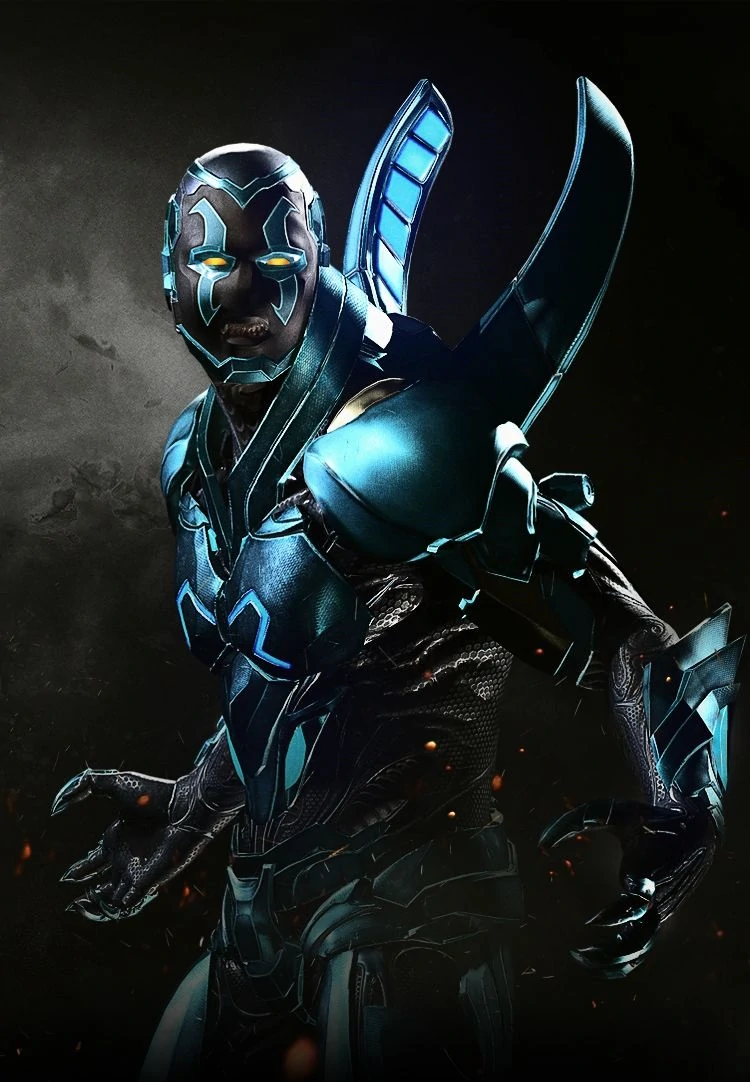
The origins of the superhero Blue Beetle are complicated, as the initial iteration of the concept was created by FOX Comics in 1939. Eventually, the superhero was sold several times until being bought by DC during the early 1980s. While the original Blue Beetle and Spider-Man were not very comparable, the DC rendition of the superhero was highly comparable to Marvel’s web-slinger. Not only are both of them bug-like superheroes, but DC’s Blue Beetle’s origin and features are quite similar to Peter Parker’s.
Although Blue Beetle never achieved the same level of success as Spider-Man, he continued to be a major character for DC and remains so to this day. Though Spider-Man is now much older, both he as well as Blue Beetle both began their heroic careers as adolescents. Similarly, considering their more naive demeanor and inexperience, it’s simple to see why numerous people liked both characters.
Being under the sway of an extraterrestrial life form may not seem like the best attribute to share with somebody, but it is something Peter and Jaime share. Although there are significant variations between these extraterrestrial life forms, they have had unexpectedly comparable effects on both Peter as well as Jaime. Both the scarab as well as the symbiote had a significant impact on the lives of the respective heroes, having a particularly strong influence on their actions.
Though Jaime’s has proved to be considerably more difficult to remove, it is still an unpleasant likeness he has with Peter Parker. Though spiders are neither insects nor bugs, many Spider-Man enemies frequently refer to the superhero as such, making it simple to understand how Spidey might be likened to Blue Beetle in such a way. While both heroes proudly bear their namesakes on their chests, the resemblance between them becomes more noticeable. Additionally, both heroes have met other heroes with similar themes, whether they are friends or foes. From Tarantula or Scarlet Spider and Black as well as Red Beetle, it’s fascinating to see how their individual “bug” insignia have been employed by others throughout the years.
Kamen Rider Demons
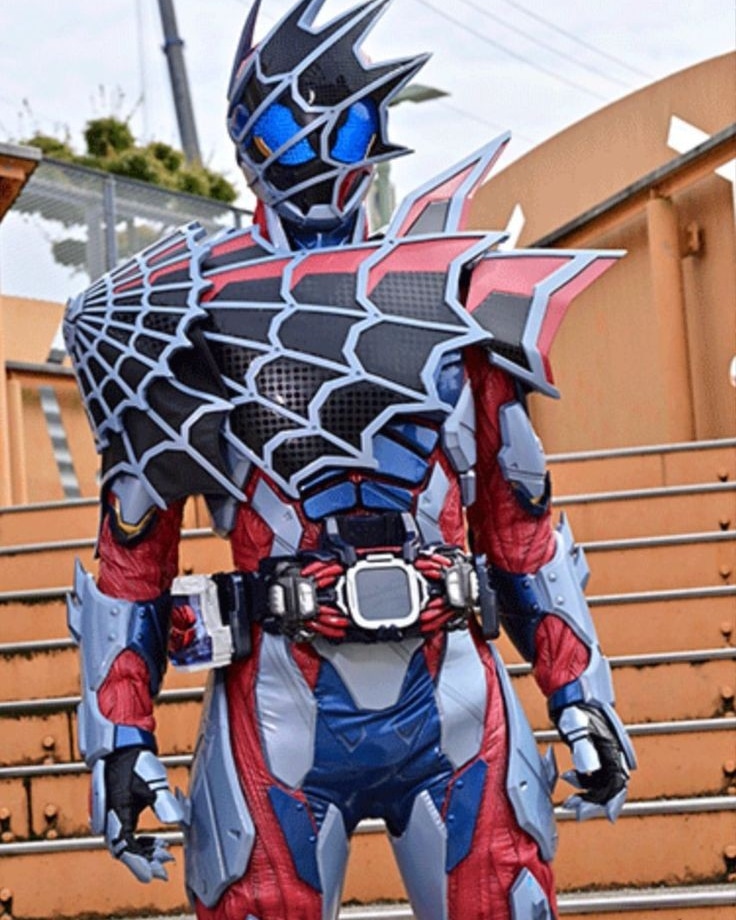
Hiromi Kadota is actually a 28-year-old Fenix captain who was demoted to field captain for utilizing the Revice Driver aggressively. His sense of justice, however, was acknowledged, and he was the very first Kamen Rider Demons. Hiromi Kadota was brought into the world on September 15, 1993, to Katsuya as well as Takako Kadota in the Miyagi rural areas. Hiromi was bullied as a youngster and had no positive examples, which inspired him to turn into a “hero” and rescue people’s lives someday.
Hiromi then joined Fenix as an adult and went through its cadet training program alongside Chigusa Yamagiri as well as Tatsuhiko Tabuchi. While he first struggled, Yujiro Wakabayashi urged him to continue to strive and put in the effort. Hiromi fought his way through the ranks after graduating first in his class, and then within three years, he was commander of his very own unit.
In this show, we have a spider-themed rider with a color scheme similar to Spidey, who can fire webs from out his arms like Spider-Man shoots webs out of his wrist, and who is then taken over by Olteca, just like Doctor Octopus once took over Peter’s hero identity, with both Olteca, as well as Otto, being guys with tentacles. What doesn’t help is that Jack Revice looks and transforms like Venom, and his name is Kamen Rider Demons, which implies that there’s a demon inside a driver and that the user must “make deals with the devil” to transform, similar to how Peter, as well as MJ, had to make a pact with the devil by having to sell their marriage in order to save Aunt May. Hiromi is a motivated and serious Fenix member who is committed to defending others.
Although his spirit of justice is real, Hiromi is prone to make blunders and impulsive decisions; George Karizaki stated that Hiromi had been unable to control his own inner devil. Hiromi, like Demons, may engage in unarmed combat with the Deadmans as well as Kamen Rider Evil. Hiromi is used to using guns in warfare as a Fenix member.
Conclusion
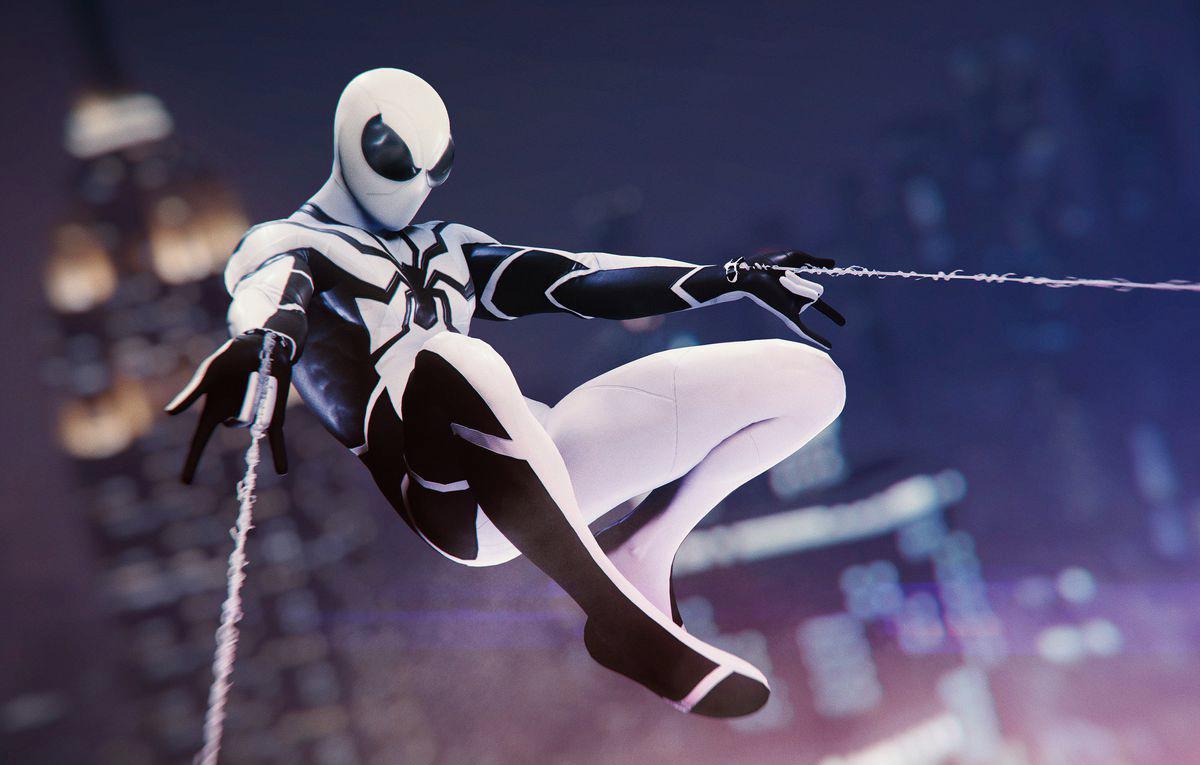
Marvel has swiftly become one of Hollywood’s most successful companies. While the popularity of Marvel Studios remains relatively young, its reputation is extremely positive. Marvel would frequently dominate its intended audience with superheroes like Spider-Man as well as the X-Men during the peak of comic-book sales. Ripping off comic book characters was not uncommon during the golden age of comics; in fact, it was rather prevalent. For many, stealing characters from rival comic books was a two-way street.
Marvel’s popularity has been emulated for decades, starting back to the 1940s and continuing to the present day. Their popularity in comics, television, and film has been replicated several times. This isn’t to say that Marvel has always been the most famous in comics, but for the longest time, it looked like they were constantly doing something right. It’s no wonder that other corporations saw this and attempted to capitalize on their popularity, often by mimicking Marvel virtually word for word.
